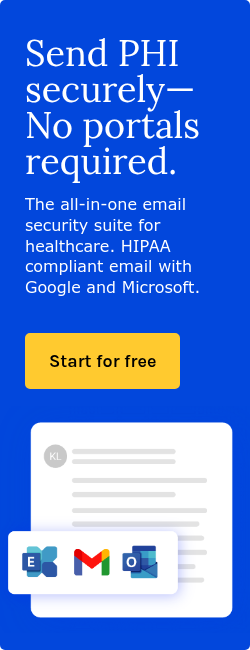
Whether you’re dealing with the complexities of HIPAA, OSHA, and CMS, or trying to mitigate fraud, waste, and abuse (FWA), maintaining compliance is an ongoing effort that requires structure, consistency, and adaptability. But how do organizations know if their compliance program is truly effective? What benchmarks determine success?
The answer isn’t as abstract as one might assume. The Office of Inspector General (OIG) has long provided a framework for evaluating compliance initiatives. Their General Compliance Program Guidance (GCPG), more commonly referred to as the "seven elements of an effective compliance program," lays out foundational principles that every healthcare organization should follow. These elements, combined with modern tools and practical strategies, can help healthcare providers assess and strengthen their programs.
Understanding the OIG's seven elements
The Office of Inspector General (OIG) lays out what it considers the gold standard for healthcare compliance programs in its 2023 General Compliance Program Guidance. The document outlines seven core elements that help organizations build and maintain a culture of accountability, transparency, and ethical behavior. While no program guarantees perfection, these elements are meant to give healthcare entities a strong foundation for preventing and addressing misconduct.
Written policies and procedures
Compliance starts with clarity, meaning organizations should develop and share written policies that spell out exactly what’s expected. As the OIG puts it, organizations should “establish and implement written policies, procedures, and standards of conduct that articulate the organization’s commitment to comply with all applicable Federal and State standards.” These aren’t just check-the-box documents, they need to be kept current and tailored to real-world risks. The OIG adds that policies “should address compliance risk areas and the organization’s operational processes.” And fundamentally, they should be written in a way accessible to everyone, not just legal teams or executives.
Compliance leadership and oversight
No compliance program works without leadership buy-in. The OIG is clear: “The compliance officer should be a high-level individual in the organization’s leadership who is empowered with independent authority to report directly to the governing body and is not subordinate to the general counsel, CFO, or COO.” Independence is a priority. It ensures the person in charge of compliance can raise concerns without going through the same people they might need to investigate. The OIG also recommends that “the governing body should exercise reasonable oversight with respect to the implementation and effectiveness of the compliance program.” Compliance isn’t just a management issue, it’s a board-level responsibility.
Training and education
Too often, compliance training is generic or forgettable. The OIG urges a more tailored approach, stating that organizations should provide “effective compliance training and education for the governing body, leadership, and employees… at least annually.” However, it goes further than that: “Training should be tailored to the responsibilities and job functions of individuals and should reflect the organization’s compliance risk areas.” In other words, a one-size-fits-all slideshow isn’t going to cut it. Employees need relevant, practical training that helps them understand their real responsibilities.
Effective lines of communication
People need to feel safe reporting problems, and they need to know their concerns will actually go somewhere. The OIG calls for organizations to “establish and maintain a system that enables individuals to report compliance concerns anonymously or confidentially without fear of retaliation.” The guidance stresses the necessity of creating “a culture of compliance where employees feel comfortable raising concerns and are confident that the organization will respond appropriately.” That kind of trust takes time, visibility, and consistent follow-through.
Enforcing standards through well-publicized disciplinary guidelines
Policies without consequences don’t mean much. The OIG states that organizations should “enforce standards through well-publicized disciplinary guidelines.” That means everyone, regardless of role or seniority, needs to be held to the same standards. The guidance warns that “discipline for failing to detect or report noncompliance” must be consistent and not influenced by “the individual’s position or length of service.” It’s about fairness, transparency, and sending the message that compliance is non-negotiable.
Risk assessment, auditing, and monitoring
Staying compliant isn’t just about reacting to problems—it’s about preventing them. That’s why regular evaluation is required. The OIG stresses, “Conducting internal monitoring and auditing is critical to the effectiveness of the compliance program.” The guidance explains that organizations should “use the results of auditing and monitoring to update policies, procedures, and training to mitigate identified risks.” A feedback loop like this helps organizations change their approach as new risks emerge.
Responding to detected offenses and taking corrective action
Mistakes and misconduct will happen. What matters most is how the organization responds. The OIG states clearly that entities should “respond promptly to detected offenses and undertake corrective action, including making any necessary repayments, disciplinary actions, and modifications to the compliance program to prevent similar misconduct in the future.” It’s not just about plugging the leak, it’s about fixing the system that let it happen in the first place.
How to evaluate compliance program performance
Once these elements are in place, how do you measure if they’re working? The evaluation of compliance program effectiveness is part qualitative, part quantitative. It’s not just about having the elements listed above but about how well they are executed and maintained.
Organizations can begin by asking the following:
- Are policies up to date and tailored to our specific operations?
- Do employees understand and follow these policies?
- How often is training conducted, and what percentage of staff complete it on time?
- Are reporting mechanisms being used, and are concerns being addressed?
- Are audits uncovering new risks or simply confirming existing assumptions?
- How quickly and thoroughly does the organization respond to compliance issues?
Beyond internal reflection, performance benchmarks can also be tracked through audit results, incident reports, training completion rates, and the resolution of corrective action plans. An organization’s ability to continuously improve its processes is often the clearest sign of an effective compliance program.
Tips from the OIG
According to the OIG’s General Compliance Program Guidance, these are practical tips for strengthening and maintaining an effective healthcare compliance program.
- “Entities should set up a regular schedule for reviewing and revising, as necessary, all policies and procedures.”
- “If the procedure for policy revision and approval impedes rapid implementation of a needed process change, OIG recommends that the entity devise a means of communicating and documenting interim policies and procedures to the relevant impacted individuals.”
- “Some compliance officers have the dual role of privacy officer. In that case, OIG recommends that the entity ensure that the compliance officer has sufficient staff and resources to perform the additional duties associated with that expanded role.”
- “Having a standing compliance item on the agenda of regular meetings is an excellent way to share information and underscore the entity’s commitment to compliance.”
- “OIG believes that whistleblowers should be protected against retaliation, a concept embodied in the provisions of the False Claims Act.”
- “Entities that want to conduct compliance risk assessments more often should ensure that they dedicate the necessary time and resources for each compliance risk assessment they perform during the year.”
- “OIG recommends that entities validate that the contractor is conducting such screening on behalf of the provider (e.g., by requesting and maintaining screening documentation from the contractor).”
FAQs
How can a compliance program be more proactive instead of reacting to problems?
It comes down to catching issues early. Regular audits, employee feedback, and day-to-day monitoring can help spot risks before they turn into real trouble.
Why does employee buy-in matter so much for compliance?
Because policies only work if people actually follow them. If employees feel like compliance is something they’re part of—not just something done to them—they’re more likely to speak up, ask questions, and do the right thing.
Can you compare your compliance program to other organizations?
Yes, some companies use third-party assessments or industry benchmarks to see how they’re doing. It’s a good way to spot gaps or areas where your program might need a little more attention.
What’s the real difference between monitoring and auditing?
Think of auditing as a deeper dive, it’s usually planned and looks at specific issues or departments. Monitoring is more like ongoing upkeep. It’s there in the background, helping you keep tabs on things regularly.
What if you’re a small practice without a big compliance budget?
You don’t need fancy systems to get the basics right. Focus on the biggest risks first, keep your policies simple and clear, and make sure your team knows who to talk to if something feels off. A strong culture goes a long way, even without a big budget.
Subscribe to Paubox Weekly
Every Friday we'll bring you the most important news from Paubox. Our aim is to make you smarter, faster.




